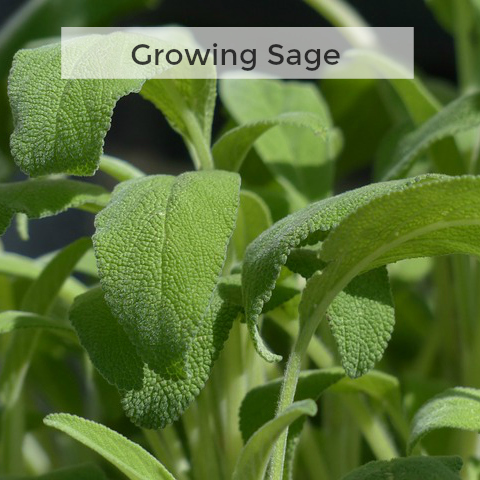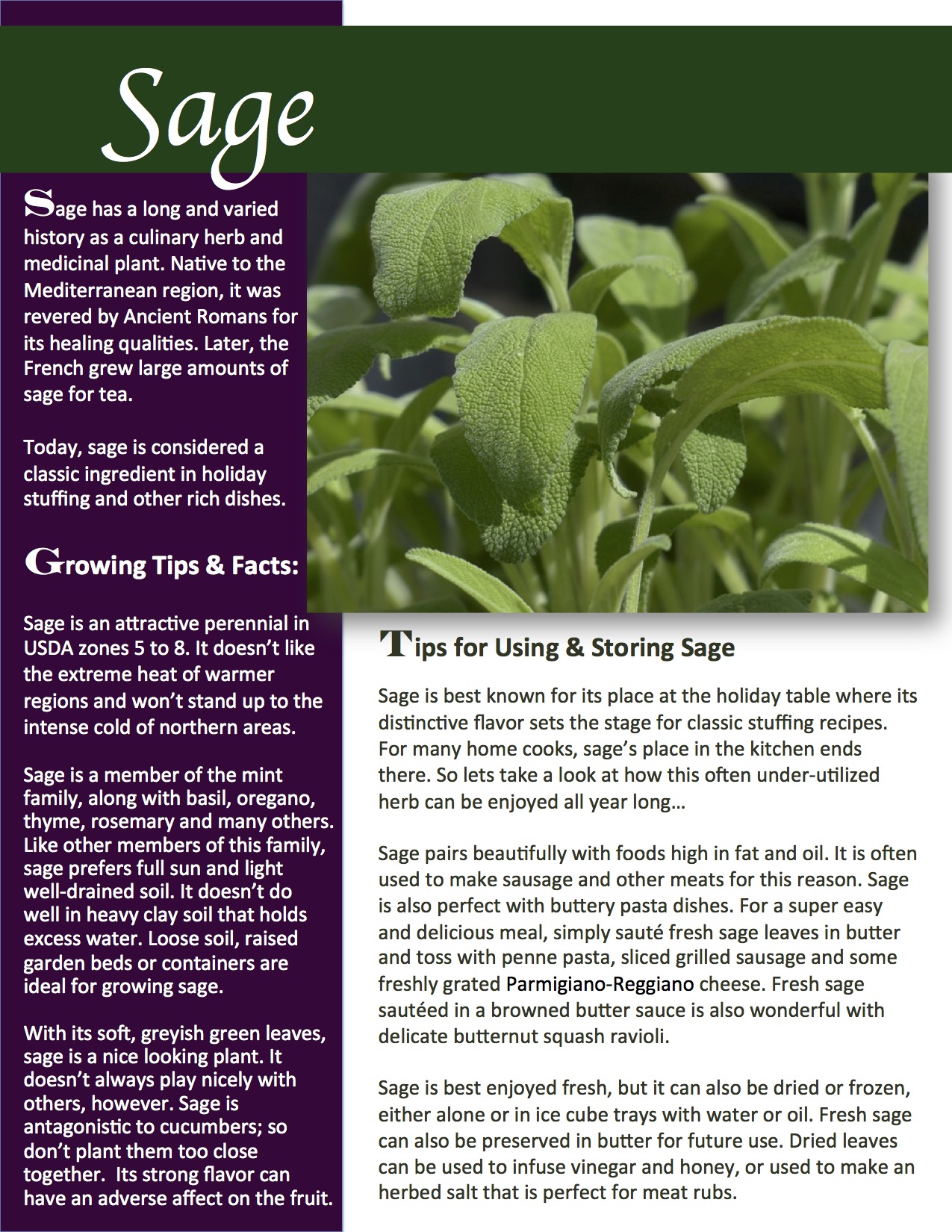
Sage has a long and varied history as a culinary herb and medicinal plant. Native to the Mediterranean region, it was revered by Ancient Romans for its healing qualities. Later, the French grew large amounts of sage for tea.
Today, sage is considered a classic ingredient in holiday stuffing and other rich dishes.
Growing tips and facts
Sage is an attractive perennial in USDA zones 5 to 8. It doesn’t like the extreme heat of warmer regions and won’t stand up to the intense cold of northern areas.
Sage is a member of the mint family, along with basil, oregano, thyme, rosemary and many others. Like other members of this family, sage prefers full sun and light well-drained soil. It doesn’t do well in heavy clay soil that holds excess water. Loose soil, raised garden beds or containers are ideal for growing sage.
With its soft, greyish green leaves, sage is an attractive plant. It doesn’t always play nicely with others, however. Sage is antagonistic to cucumbers; so don’t plant them too close to each other. Its strong flavor can have an adverse affect on the fruit.
Tips for using and preserving sage
Sage is best known for its place at the holiday table where its distinctive flavour sets the stage for classic stuffing recipes. For many home cooks, sage’s place in the kitchen ends there. However, this often under-utilized herb can easily be enjoyed all year long.
Sage pairs beautifully with foods high in fat and oil. It is often used to make sausage and other meats for this reason. Sage is also perfect with buttery pasta dishes.
For a super easy and delicious meal, simply sauteé fresh sage leaves in butter and toss with penne pasta, sliced grilled sausage and some freshly grated Parmigiano-Reggiano cheese. Fresh sage sautéed in a browned butter sauce is also wonderful with delicate butternut squash ravioli.
Sage is best enjoyed fresh, but it can also be dried or frozen, either alone or in ice cube trays with water or oil.
Fresh sage can also be preserved in butter for future use.
Dried leaves can be used to infuse vinegar and honey, or used to make an herbed salt that is perfect for meat rubs.


Leave a Reply